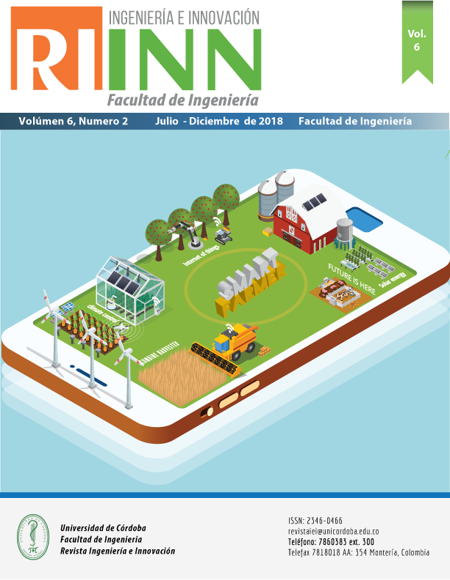Estilos de aprendizaje y minería de datos: un estudio preliminar en el contexto universitario
Estilos de aprendizaje y minería de datos: un estudio preliminar en el contexto universitario
Show authors biography
This article presents the preliminary findings of ongoing research on learning styles and academic performance in engineering students of the Universidad Pontificia Bolivariana. For the development of the research, data mining has been used as a technique for ordering and analyzing data. The research is articulated with the commitment of the University to prevent student desertion and improve the pedagogical practices of university teachers, taking as a frame of reference the commitment of the Ministry of National Education (MEN-Colombia) to strengthen smart cities. In the initial theoretical approach, the questionnaire (CHAEA) of Honey and Alonso was identified as the main instrument for evaluating learning styles. With the CHAEA questionnaire, the collection of data is started, which will later be analyzed with the help of different algorithms applied in data analytics. This initial phase of the investigation made it possible to show that data mining has been used frequently in studies related to academic performance and university desertion, especially the problem tree technique:
Article visits 788 | PDF visits
Downloads
[1]. Aguilera Pupo, E., & Ortiz Torres, E. (2009). Las investigaciones sobre los estilos de aprendizaje y sus modelos explicativos. Revista Estilos de Aprendizaje, 4(4), 1–19. Retrieved from http://learningstyles.uvu.edu/index.php/jls/article/view/167/125
[2]. Aguilera Pupo, E., & Ortiz Torres, E. (2009). Las investigaciones sobre los estilos de aprendizaje y sus modelos explicativos. Revista Estilos de Aprendizaje, 4(4), 1–19. Retrieved from http://learningstyles.uvu.edu/index.php/jls/article/view/167/125
[3]. ALMENDRALES, G. (2016). Estudio sobre los estilos de aprendizaje mediante minería de datos como apoyo a la gestión directiva de la Institución Educativa Joaquín Cárdenas Gómez del municipio de SAN CARLOS. Medellín.
[4]. Barragán Moreno, S. P., & González Támara, L. (2017). Approach to student dropouts from the perspective of social and academic integration. Revista de La Educacion Superior, 46(183), 63–86. https://doi.org/10.1016/j.resu.2017.05.004
[5]. Brault, M. C., Janosz, M., & Archambault, I. (2014). Effects of school composition and school climate on teacher expectations of students: A multilevel analysis. Teaching and Teacher Education, 44, 148–159. https://doi.org/10.1016/j.tate.2014.08.008
[6]. Chapman, P., Clinton, J., Kerber, R., Khabaza, T., Reinartz, T., Shearer, C., & Wirth, R. (2000). Crisp-Dm 1.0. CRISP-DM Consortium, 76. https://doi.org/10.1109/ICETET.2008.239
[7]. Eckert, K. B., & Suénaga, R. (2015). Análisis de deserción-permanencia de estudiantes universitarios utilizando técnica de clasificación en minería de datos. Formacion Universitaria, 8(5), 3–12. https://doi.org/10.4067/S0718-50062015000500002
[8]. Fallis, A. . (2013). Encuentro Internacional de Educación en Ingeniería ACOFI 2014. Journal of Chemical Information and Modeling (Vol. 53). https://doi.org/10.1017/CBO9781107415324.004
[9]. Gargallo-López, B., Pérez-Pérez, C., Verde-Peleato, I., & García-Félix, E. (2017). Estilos de aprendizaje en estudiantes universitarios y enseñanza centrada en el aprendizaje. RELIEVE - Revista Electrónica de Investigación y Evaluación Educativa, 23(2), 1–24. https://doi.org/10.7203/RELIEVE.23.2.9078
[10]. Madrigal, A. D. J., & Trujillo, J. M. (2014). Adaptación del cuestionario Honey-Alonso de estilos de aprendizaje para estudiantes de una institución universitaria de Medellín, Colombia. Journal of Learning Styles, 7(13), 155–181. Retrieved from http://learningstyles.uvu.edu/index.php/jls/article/view/38
[11]. Ministerio de Educación Nacional. (2015). Estadísticas Deserción y Graduación 2015. Ministerio de Educación Nacional, 4. Retrieved from www.mineducacion.gov.co/sistemasdeinformacion/1735/articles-357549_recurso_3.pdf
[12]. Núñez Cardenas, F. de J., Hernández Palacios, R., Tomás Mariano, V. T., & Felipe Redondo, A. M. (2013). Identificación de Estilos de Aprendizaje en Alumnos Universitarios de Computación de la Huasteca Hidalguense mediante Técnicas de Minería de Datos, 1–7.
[13]. Ortiz, Y. G., López, D., Machado, D. C., & Frutos, O. R. (2014). Rendimiento Academico 1. Edumecentro, 6(2), 272–277. Retrieved from http://www.revedumecentro.sld.cu
[14]. SEGARRA, M., ESTRADA, M., & MONFERRER, D. (2015). Estilos de aprendizaje en estudiantes universitarios: lateralización vs. interconexión de los hemisferios cerebrales. (Spanish). University Students’ Learning Styles: Lateralisation vs. Interconnection of Cerebral Hemispheres. (English), 73(262), 583–600. Retrieved from http://pbidi.unam.mx:8080/login?url=http://search.ebscohost.com/login.aspx?direct=true&db=zbh&AN=110262208&lang=es&site=eds-live
[15]. Wang, M. Te, & Eccles, J. S. (2013). School context, achievement motivation, and academic engagement: A longitudinal study of school engagement using a multidimensional perspective. Learning and Instruction, 28, 12–23. https://doi.org/10.1016/j.learninstruc.2013.04.002




